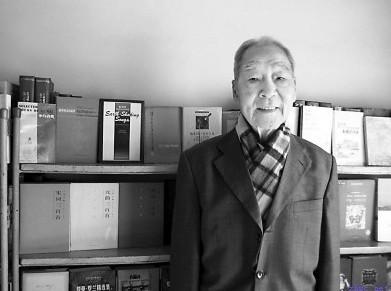Under the eaves of a large house, some hundred yards from the road, a middle-aged scholar was standing with a ten- or eleven-year-old boy at his side. (5) He was evidently affected by this little scene, for a groan escaped his lips and he appeared to be very close to tears.
"Poor creatures!" he murmured to himself. (6)
注5. 这一句原文有两个并列分句,先说某处有座大屋,再说檐下站着两个人。叙事的顺序可以说是由远及近。译文则从Under the eaves开始,然后再处理第一个分句里的内容of a large house, some hundred yards from the roads。原文“站着一个中年文士,一个十一二岁的小孩”,也是并列结构,而译文却是with a ten- or eleven-year-old boy at his side。这样,原文的并列结构就变成了译文的主从结构,突出了a middle-aged scholar。
注6. 原文主语是“那文士”,后面带四个谓语。译文突出第一个谓语,然后用for引出两个从句,最后另起一段处理引语。
5. 那小孩问道:“爹爹,他们犯了什么罪?”那文士道:“又犯了什么罪?昨日和今朝,已逮去了三十几人,都是我们浙江有名的读书人,个个都是无辜株连。”他说到“无辜株连”四字,声音压得甚低,生怕给押送囚车的官兵听见了。那小孩道:“那个小女孩还在吃奶,难道也犯了罪?真没道理。”那文士道:“你懂得官兵没道理,真是好孩子,唉,人为刀俎,我为鱼肉,人为鼎镬,我为麋鹿!”
"Papa," said the little boy, "what have they done wrong?" (7)
"What indeed!" said the man, bitterly. "During these last two days they must have made more than thirty arrests. All our best scholars. And all of them innocents, caught up in the net," he added in an undertone, for fear that the soldiers might hear him. (8)
"That girl's only a baby," said the boy. "What can she possibly be guilty of? (9) It's very wrong."
"So you understand that what the Government soldiers do is wrong," said the man. "Good for you, my son!" He sighed. "They are the cleaver and we are the meat. They are the cauldron and we are the deer." (10)
注7. 英语除了先出引语,后出说话人,还经常把一句引语分成两截,把说话人插在中间。
注8. All our best scholars. And all of them innocent...都是省略句。这在口语里是常见的。这样译正体现了口语的特点。此外,原文“生怕……”在结构上是前面谓语的并列谓语,但其含义是说明压低声音的原因。因此译文用介词短语加that从句for fear that...,这在句子里叫状语,表示原因。
注9. 原文“那个小女孩还在吃奶,难道也犯了罪?”前半句是陈述句,后半句是疑问句,可以放在一起。英语则不然,前半句和后半句在文字上没有联系,便要分成两句。在陈述句后加句号,问题另起一句。像中文那样用逗号把它们连在一起是不行的。
注10. 最后两句译文中间都加了and。请注意,我们自己译的时候,不要把它丢掉。
6. 那孩子道:“爹,你前几天教过我,‘人为刀俎,我为鱼肉’,就是给人家斩割屠杀的意思。人家是切菜刀,是砧板,我们就是鱼和肉。‘人为鼎镬,我为麋鹿’这两句话,意思也差不多么?”那文士道:“正是!”眼见官兵和囚车已经去远,拉着小孩的手道:“外面风大,我们回屋里去。”当下父子二人走进书房。
"You explained 'they are the cleaver and we are the meat' the other day, papa," said the boy. "It's what they say when people are massacred or beheaded. Like meat or fish being sliced up on the chopping-board. (11) Does 'they are the cauldron and we are the deer' mean the same thing?"
"Yes, more or less," said the man; and since the train of soldiers and prison carts was now fast receding, he took the boy by the hand. (12)
"Let's go indoors now," he said. (13) "It's too windy for standing outside."
Indoors the two of them went, and into his study.
注11. it's和泛指的they都是口语里常用的说法。Like meat and fish being...也是省略句。这都体现了口语的特点。叙事像叙事,对话像对话,不是很容易做到的,值得注意。
注12. train一词很有用,我们往往想不起它来。它可以指a number of people or animals moving in a line,也可以指a series of events or actions that are connected,用在这里是很恰当的。
此外,“拉着小孩的手”不要译作He took the boy's hand,那是中国式的英文,He took the boy by the hand,这才是地道的英文。
注13. 从原文第4段到第6段,“文士”一词共出现五次。第一次出现时译为scholar,随后便不再重复这一译法,而交替使用he (his, him)和the man。这一点,你注意到了吗?















